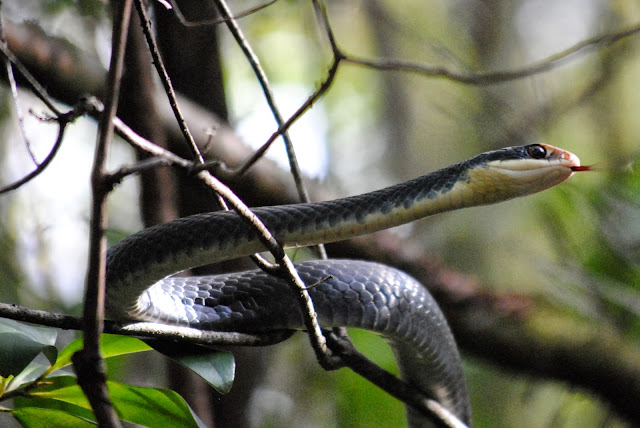The Cuban Tree Frog (Osteopilus septentrionalis) is an invasive species, native to Cuba, the Cayman Islands and Bermuda. Scientists believe they first came to Florida in the 1920's as ship stowaways.
Larger than any native Florida Tree Frog, they are voracious predators on our local "herps." Beyond eating our local frogs, they also disrupt the local mating and behavior by their incessant noise....especially during the rainy season. Here's a link to the "Frog Listening Network" where you can hear their serenade!
Wreaking havoc on the local frog population isn't enough for these invaders.....now they are taking over local bird houses!
Looks cute in his bird house abode, but these little terrors do much damage by taking refuge in power transformers, causing short circuits and power outages. Univ of Florida scientists recommend that you deter them with a spray called, "Sniff"N"Stop" and if you catch any to dispatch them humanely with a product called, "HopStop." Firearms are not recommended, but consult local law enforcement if a shotgun is your weapon of choice.
This stuff is guaranteed on anything from spiders to bears!
Made for poison toads in Australia, but works just as well on Cubans.









































